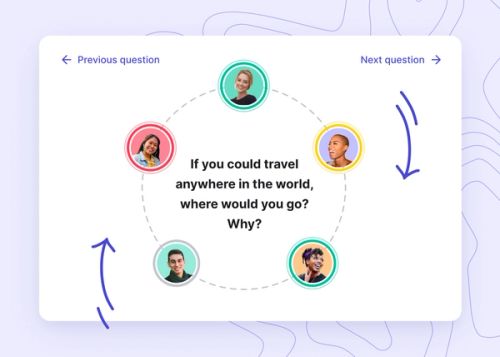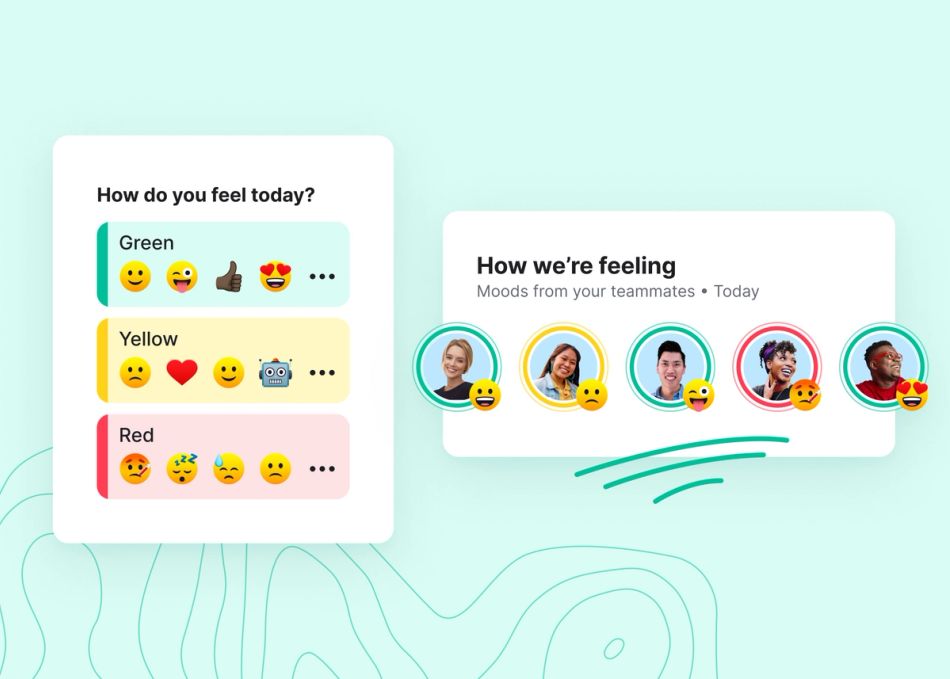
Personal user manuals are all about the person. If you’ve been looking for a way to help your remote team communicate and get to know one another better, these manuals can be the perfect way to get started.
They’re an incredibly useful tool for building relationships, building trust, and facilitating collaboration and smooth communications.
It’ll take some self-reflection, but the process is fairly straightforward — just follow the steps below and you can even build a personal user manual and handbook in Range.
Section 1: Create a brief overview and introduction
This section doesn’t have to be particularly long or detailed. Most of the nitty-gritty will come in later sections, so keep this one to the broad strokes. Identify the larger elements that you think team members would appreciate knowing. Usually, this will be things like where you came from, who you are, and a brief summary or some bullet points to outline your career history.
Section 2: Outline your ideal working environment
This section isn’t so much about your office preferences, but more about times, methods and styles that help you do your best work. Be sure to answer the following questions:
- Do you prefer working from home or from the office?
- Do you work best as part of a team or when working solo?
- Do you enjoy busy environments or a quieter workday?
- Do you work best in the morning, afternoon, or evening?
Offer details about each of these things to help people understand how you like to work. For instance, one person might be at their best working in quiet solitude, but another would risk falling asleep from the boredom and thus prefers a lively environment.
Section 3: Share your preferred communication methods
Email? Phone? Text? Slack? Range?
Reserve this section to discuss how you best like to communicate.
Some people would rather take a phone call, others would prefer you email them with questions or information. Be sure to not only list your preferred communication types, but also the best way to reach you when something is urgent.
Another thing to include is frequency. Some people check their email every time they hear a notification, others set aside time at certain points throughout the day for it, and a few will only check emails at the beginning or end of the day to prevent too many interruptions.
Similarly, there will be times when you let your calls go to voicemail or when you’re unresponsive on the company chat. Use this section to give people a general idea of these things so they know what to expect from you.

Section 4: Explain how you like to receive feedback
Some people like to get feedback on things as soon as possible, but others would rather let some time go by before getting feedback. This is one thing to list in your feedback section.
Another point to bring up is how you like to have feedback delivered. Some would rather talk it out in person, but others work well with feedback left as comments left on docs or listed in an email. Stipulate your preferences in your user guide to help everyone deliver what works best for you.
Section 5: Be honest about your strengths and weaknesses
Strengths and weaknesses may be the toughest part of your own user manual because it takes some introspection. You may need to work to reveal your own blind spots, but it’s still worthwhile to list out. Are you a great verbal communicator, or is this a skill that is lacking? What about written skills, time management, creativity, or other soft skills?
Consider these things carefully and write a little bit about them. For weaknesses, avoid self-deprecation and instead frame it as areas that you’re actively working to improve.
Section 6: Highlight your hobbies, passions, or fun facts about you
No personal user guide would be complete without a section devoted to the hobbies, passions, and personality quirks that make you who you are.
This can be a vital way to build better relationships since it can help you to establish common ground with team members who share similar hobbies or passions. If nothing else, it’s something that can make a great icebreaker with new hires.
For this section, you may even want to include your Myers Briggs Personality Type Indicator. While it’s impossible to categorize everyone on the planet according to 16 different categories, this guide can work pretty well to give a broad strokes perspective on your personality type.
For instance, introverts and extroverts can have very different communication and collaboration styles.
Introverts are more likely to enjoy working alone and stay quiet during meetings.
Extroverts are more likely to want to be involved with an energetic group, and are more likely to speak up during meetings.
Knowing these little personality quirks can give you greater insights about your team members and help you run more effective meetings.
All of these details put together can give another person a great picture of who you are, how you work best, and how best to interact with you.
Create Your Personal User Manual in Range
Handbooks appear on your Range profile and provide a personal briefing of sorts, a blueprint for who you are and how you like to work. They let you share a bit about yourself, what you work on, and how you like to work.

It’s an opportunity to share important details which aid collaboration, such as how you best like to communicate and perhaps some details about your working situation.
What to remember as you create your personal user manual for work
Think of a personal user manual as a guide to “how to work with me.” Adam Bryant first introduced the concept in a New York Times column, The Corner Office.
The idea behind personal user manuals is that everyone is different — and using the same leadership or communications approaches with everyone may not be the best strategy.
That’s where these manuals come in. It’s a living document that shows people how you like to work, your favorite ways to communicate, preferred feedback methods, and preferred collaboration methods.
Personal user manuals minimize surprises & misperceptions between team members
There’s always a learning curve when you work with someone new — and that curve means that it can take a long time to really get to know the other person and their preferences. Personal user manuals can really help to build a sense of psychological safety, which is the belief or feeling that one is empowered to speak their mind without fear of negative repercussions.
Throughout, there’s always a chance of misperceptions, too. Maybe you misunderstood that this particular person prefers phone calls over emails, for example.
Personal user manuals reduce that learning curve, and ideally, they also eliminate surprises and misconceptions. You’ll have a handy document where things like tips, expectations, and unique quirks are all laid out in unambiguous terms.
They create an honest and open workspace
Sometimes it’s difficult to be open and honest because you may not know how to broach sensitive subjects without offending or upsetting someone else.
Personal user manuals should include tips and tricks for delivering feedback and constructive critique to help everyone deliver feedback without ruffling feathers.
Personal user manuals should also give everyone the tools they need to feel comfortable speaking their minds.
Some people may hesitate to speak up with ideas or opinions. Personalized tips showing them the best way to do it can give them the confidence to make them comfortable sharing ideas and opinions.
They spark introspection
What happens when people open up to one another? It makes them vulnerable — and that can be a good thing. The type of vulnerability that comes from opening up to other people helps build trust and humility, which are two things that can cement coworkers and teams together with strong bonds.
The act of creating a personal user manual also sparks introspection, which helps break the usual thought routines. This can lead to greater self-awareness about communication habits, work styles, and more.
They creates accountability while respecting individuality
Now that remote work has become so popular, it’s becoming increasingly easy to dismiss people as just words on a screen: We don’t even realize we’re doing it most of the time.
Because these manuals help you get to know team members, they also help create more workplace accountability. The thought process here is that you’re more likely to remember that there are humans behind the words on your screen.
Personal user manuals also promote individuality. Flipping through the user manuals for your team will highlight the differences and diversity of the group, which will help you understand and respect those differences.
Strengthen team culture with Range
Successful communication is what makes the workplace run smoothly, which is why creating personal user guides can be such a big help.
But you’ll also need tools to facilitate those communications. Range empowers smooth team collaboration.
Learn more about how Range strengthens team culture.

- Handbooks show how each team member prefers to work
- Icebreaker questions in check-ins & before meetings helps you get to know each other better
- Tags and flags help you organize work while raising important concerns
- Use meeting agendas in Range to organize & keep your meetings on track








